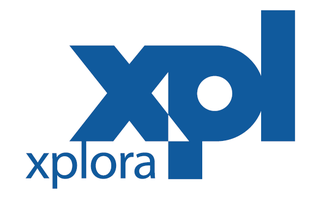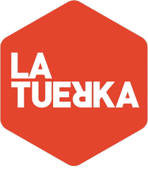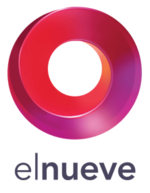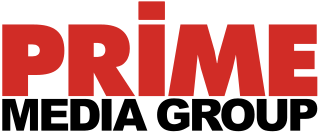
Telefe is a television station located in Buenos Aires, Argentina. The station is owned and operated by Viacom through Televisión Federal S.A. Telefe is also a television network and one of Argentina's five national television channels.

Natalia Marisa Oreiro Iglesias is a Uruguayan singer, actress, and fashion designer. Oreiro began her career in telenovelas. Since 2008 she has switched to work primarily in films. Oreiro has worked on social awareness shows and events for organizations like Greenpeace and UNICEF, the latter of which designated her as ambassador for Argentina and Uruguay in September 2011. She has been included in Esquire magazine's "The Sexiest Woman Alive Atlas" list.

Channel 13 is an Argentine television network and the flagship station of the same network, located in the capital of Argentina, Buenos Aires. It is owned by Grupo Clarín.

Azul Tequila is a Mexican telenovela. The 80-episode serial was produced for TV Azteca by the celebrity couple Christian Bach and Humberto Zurita in conjunction with Humberto's brother Gerardo through their production company ZUBA Producciones. The complete series has been released in an 8 DVD box set.
Televisión Pública Argentina is a publicly owned Argentine television network, the national public broadcaster. It began broadcasting in 1951, when LR3 Radio Belgrano Television channel 7 in Buenos Aires, its key station and the first television station in the country, signed on the air.
LS86 TV América TV La Plata is a television station located in La Plata, Buenos Aires, Argentina. The station is owned and operated by America TV S.A. América is also one of Argentina's five national television channels.
Patagonik Film Group is an Argentine production company, dedicated to the making of feature films and film production services. A part of the Clarín Group, Patagonik Film Group also assists in the production of international films that want to film in Argentina.

Daniel Hadad is an Argentine businessman involved in telecommunications and media.
Television in Spain was launched in October 1956, when the state broadcaster Televisión Española (TVE) started regular broadcasts. The first private channels started in 1990. Colour transmissions started in 1972 after two years of test transmissions, with all programming transmitted in color from 1977, and colour commercials, which started in 1978. Currently, television is one of the leading mass media of the country, and by 2008 was in 99.7% of households in Spain according to INE statistics.
Fernando Lúpiz is an Argentine fencer and actor. He competed at the 1972 and 1976 Summer Olympics. He later became known for playing Zorro on stage.
Nueve is a Mexican free-to-air television network owned by Televisa. The primary station and network namesake is Channel 9 of Mexico City, though the network has nationwide coverage on Televisa stations and some affiliates. Nueve offers a range of general entertainment programs.
Canal+ was a Spanish satellite broadcasting platform. It was previously known as Digital+ since its launch in 2003, and recently since 2011 as Canal+, being named after its main premium channel.

Xplora was a Spanish TV channel owned by Atresmedia. The channel started broadcasting on 1 May 2012, replacing laSexta2 due its low ratings. On 5 May 2014, the channel ceased broadcasting.

Nueve was a private Spanish television channel owned by Mediaset España Comunicación. Their programming is aimed at more conventional women. Nueve officially began broadcasting its programming on January 21, 2013. The channel uses the song "Sweet About Me" by Gabriella Cilmi for its jingle and theme.

Solamente vos is a 2013 Argentine television comedy starring Natalia Oreiro and Adrián Suar. It was produced by Pol-ka and was aired by El Trece. In Argentina, Solamente vos, has a 15.8 audience rating average.

La Tuerka is a Spanish television show, produced by Producciones CMI, broadcast by Público TV over the Internet and by Tele K via TDT, with Pablo Iglesias Turrión as one of the presenters. The program airs on Mondays and Fridays at 10:00 pm on its YouTube channel, which has amassed almost 30 million views.
Movistar+ is the trade name of the subscription platform for digital television owned by Telefónica, which operates in Spain and is distributed via satellites such as Astra and Hispasat as well as with ADSL and optical fiber. The platform, which was officially launched on July 8, 2015, stems from the merger of Canal+ and Movistar TV. It is the largest subscription television provider in Spain with 3.8 million customers and 71% of market share.
XHTVL-TDT is a television station in Villahermosa, Tabasco, Mexico. XHTVL broadcasts on virtual channel 13 and is currently an independent station.


















